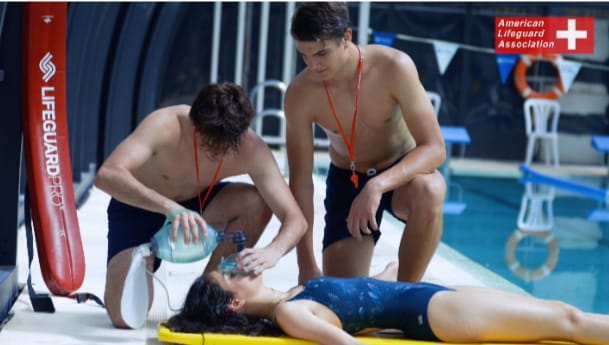Water exercises are a wellspring of happiness and relaxation for some, whether you’re swimming in a pool, enjoying the ocean waves, or boating on a lake. However, these exercises come with intrinsic risks that can be limited by following essential water safety rehearses.
This article gives exhaustive guidelines to ensure your time in the water stays both tomfoolery and safe.
Understanding the Risks
Before jumping into the specifics of water safety, it’s significant to comprehend the potential risks related with water environments. Whether in a pool, ocean, river, or lake, water can introduce risks areas of strength for like, cold temperatures, or unexpected profundity changes.
Moreover, even shallow water represents a risk of drowning, particularly for small kids or unpracticed swimmers. Recognizing these risks is the first move toward ensuring safety in and around water.
The Significance of Supervision
One of the best lifeguarding and water safety tips to prevent water-related accidents is through vigilant supervision. Never leave children unattended near water, in any event, briefly. An adult ought to continuously be inside arm’s range of small kids in the water, no matter what their swimming skill. For more established children and adults, it’s as yet savvy to swim with a pal. If there should be an occurrence of an emergency, having someone nearby can have a vital effect.
Learn to Swim
Knowing how to swim is an important ability that significantly diminishes the risk of drowning. Swimming lessons are essential for people, all things considered, beginning as soon as workable for children.
These lessons teach swimming techniques as well as ingrain regard for water and awareness of expected risks. While swimming capacity fluctuates, everybody ought to endeavor to learn the rudiments, like floating, treading water, and safe passage and leave techniques.
Use Life Jackets and Flotation Devices
For the people who are not sure swimmers or are taking part in exercises like boating, wearing a life coat is an unquestionable requirement. Ensure the life coat is U.S. Coast Gatekeeper endorsed and suitably fitted for the wearer’s size and weight. While inflatable toys and froth noodles are famous in pools, they are not substitutes for life jackets and ought not be depended upon for safety.
Recognize the Signs of Drowning
Drowning frequently happens quietly and rapidly, with next to zero sprinkling or calls for help. It’s essential to recognize the signs of drowning, which can incorporate head low in the water, mouth at water level, eyes polished or shut, and the failure to call out or wave for help. Being aware of these unpretentious signs can empower brief intercession, possibly saving a life.
Be Aware of Weather and Water Conditions
Before going out for water exercises, consistently check the weather estimate and water conditions. Unexpected tempests can make risky conditions, including high waves, lightning, and solid currents. Indeed, even on a sunny day, rip currents in oceans or solid undercurrents in rivers can present significant risks. Learn to recognize advance notice banners at beaches and stick to them stringently.
Avoid Alcohol and Drugs
Alcohol and water exercises don’t blend. Alcohol impedes judgment, equilibrium, and coordination, which are all significant for safe swimming and boating. Essentially, the utilization of sporting drugs can significantly expand the risk of accidents in and around water. It’s best to avoid these substances by and large when wanting to take part in water-related exercises.
Pool Safety Measures
For those with pools at home, a few water safety tips can assist with preventing accidents. Introduce a wall around the pool with a self-hooking entryway to keep children out when unaided. Pool covers and cautions add extra layers of security. It’s likewise imperative to ensure that pool channels are furnished with safety covers to prevent entrapment, an uncommon yet serious peril.
First Aid and Emergency Readiness
Being ready for an emergency is an indispensable piece of water safety. Everybody ought to know fundamental first aid and CPR (Cardiopulmonary Resuscitation). In a drowning circumstance, seconds count, and knowing how to do mouth to mouth can save a life while trusting that emergency administrations will show up. Keep a first aid pack and a telephone nearby when participating in water exercises to ensure speedy admittance to help if required.
Enroll in Water Safety Courses
To additional upgrade your insight and abilities, consider enrolling in lifeguard courses presented by reputable associations. The American Lifeguard Association gives training on an assortment of water safety points, including lifeguarding, CPR, and rescue techniques. These courses are significant for everybody, from guardians and parental figures to ardent swimmers and boaters.
Final Word
Water exercises can be both tomfoolery and safe when the right insurances are taken. By understanding the risks, staying vigilant, learning essential swimming and rescue abilities, and following these water safety tips, you can enjoy your time in the water with true serenity. Continuously remember that safety ought to be really important, permitting you to take full advantage of your amphibian adventures while limiting risks.


